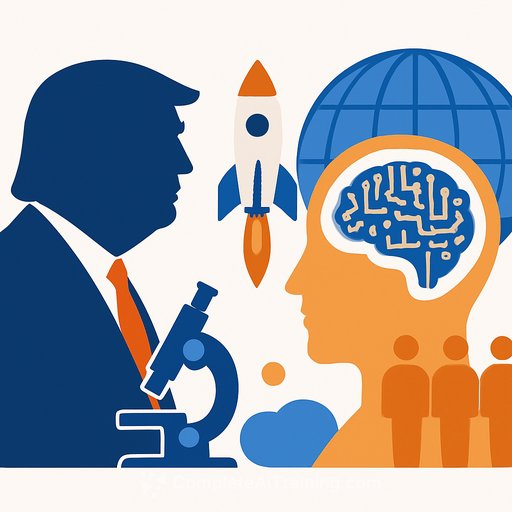Genesis Mission launches: US sets a bold AI agenda, funding questions loom
On 27 November 2025, President Donald Trump launched the Genesis Mission, framed as the United States' "next great science chapter." The initiative is built around three pillars: expanding national computing capacity, opening access to federal datasets, and driving real-world scientific applications. The ambition is clear; the follow-through will decide the outcome.
What's on the table
- More compute: Plans point to scaled infrastructure so researchers can train and run advanced models without bottlenecks.
- Broader data access: Federal datasets would become easier to find and use, with guardrails for privacy, security, and responsible use.
- Translational science: Priority use cases will focus on practical gains across disciplines, moving ideas into field-tested tools.
Why the Apollo comparison matters
Calling this an Apollo-level effort raises expectations on scale, coordination, and outcomes. Experts are already warning that funding must increase for the plan to meet its promises. Without sustained investment and agency alignment, this risks becoming a statement rather than a program that ships results.
What this means for research leaders
- Forecast compute needs: Map workloads, storage, and networking for the next 12-24 months; build cost models for on-prem, cloud, and hybrid.
- Get data ready: Standardize metadata, provenance, and consent models now. Draft data-sharing agreements that anticipate federal access policies.
- Pick high-yield pilots: Identify 2-3 projects where better compute and broader data could move the needle within six months.
- Diversify funding: Prepare modular proposals that can slot into agency calls as they open. Line up matching funds and multi-institution collaborations.
- Skill up teams: Upskill PIs, data stewards, and research software engineers in modern AI workflows, evaluation, and compliance.
Key execution questions
- Budget and timeline: What is the total allocation, over what period, and how is it distributed across agencies?
- Access model: Who gets priority on shared compute, and how are tokens/quotas managed across universities, labs, and startups?
- Data governance: Which federal datasets are first, under what licenses, and how are privacy and security enforced?
- Measurement: What metrics define success-papers, tools, clinical or field deployments, tech transfer, workforce outcomes?
- Interagency coordination: How will OSTP, DOE, NSF, NIH, DoD, and NIST avoid duplication and move fast on standards and procurement?
Practical steps to take now
- Run a compute gap assessment: Benchmark current training/inference workloads and queue times; document blockers.
- Audit your data estate: Inventory datasets, permissions, and risks; tag what could be shared under anticipated federal rules.
- Stand up an internal AI review board: Streamline approvals for pilots, model evaluations, and sensitive-data use.
- Draft modular project briefs: One-pagers with goals, partners, data, compute needs, risks, and 90-day milestones.
- Track policy signals: Follow OSTP and NIST updates on standards, safety, and measurement frameworks.
Two things can be true: the Genesis Mission sets a useful direction, and it will stall without serious funding and clear governance. Labs and departments that prepare now-on compute, data, pilots, and skills-will be first in line when programs open and infrastructure comes online.
Further reading
Upskill your team
Your membership also unlocks:





